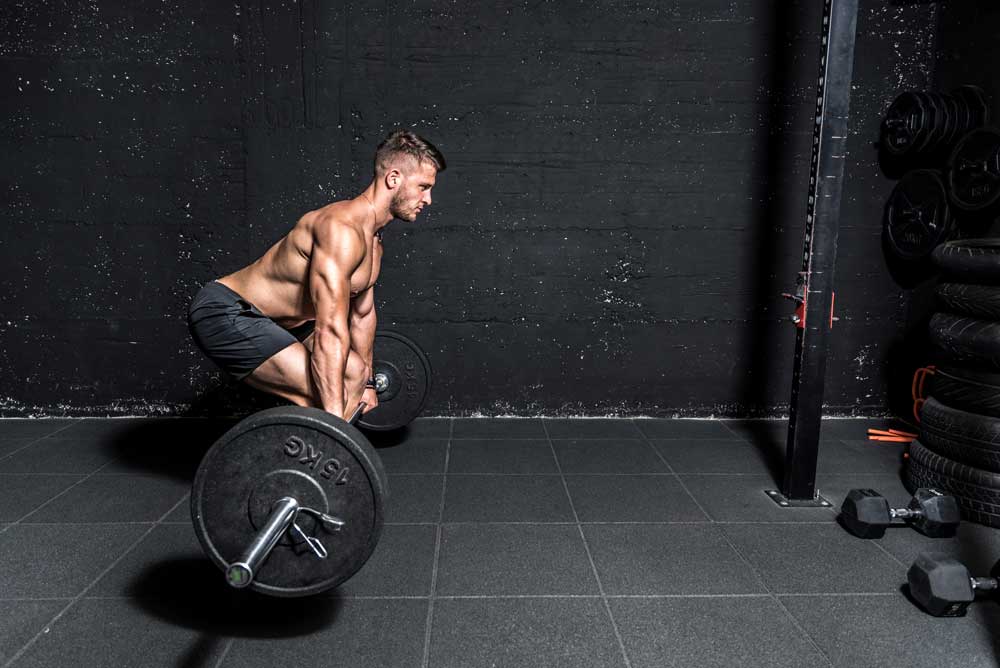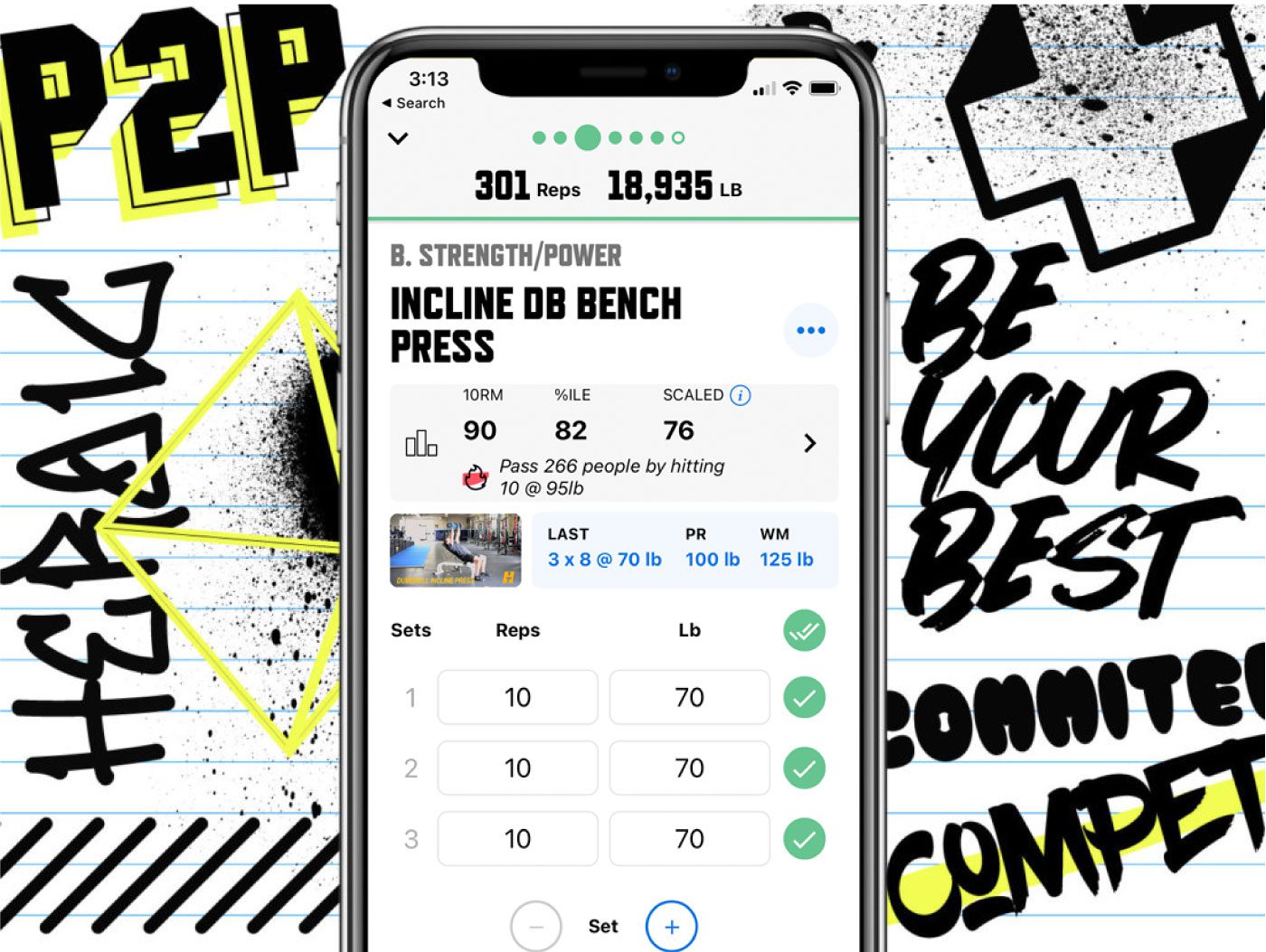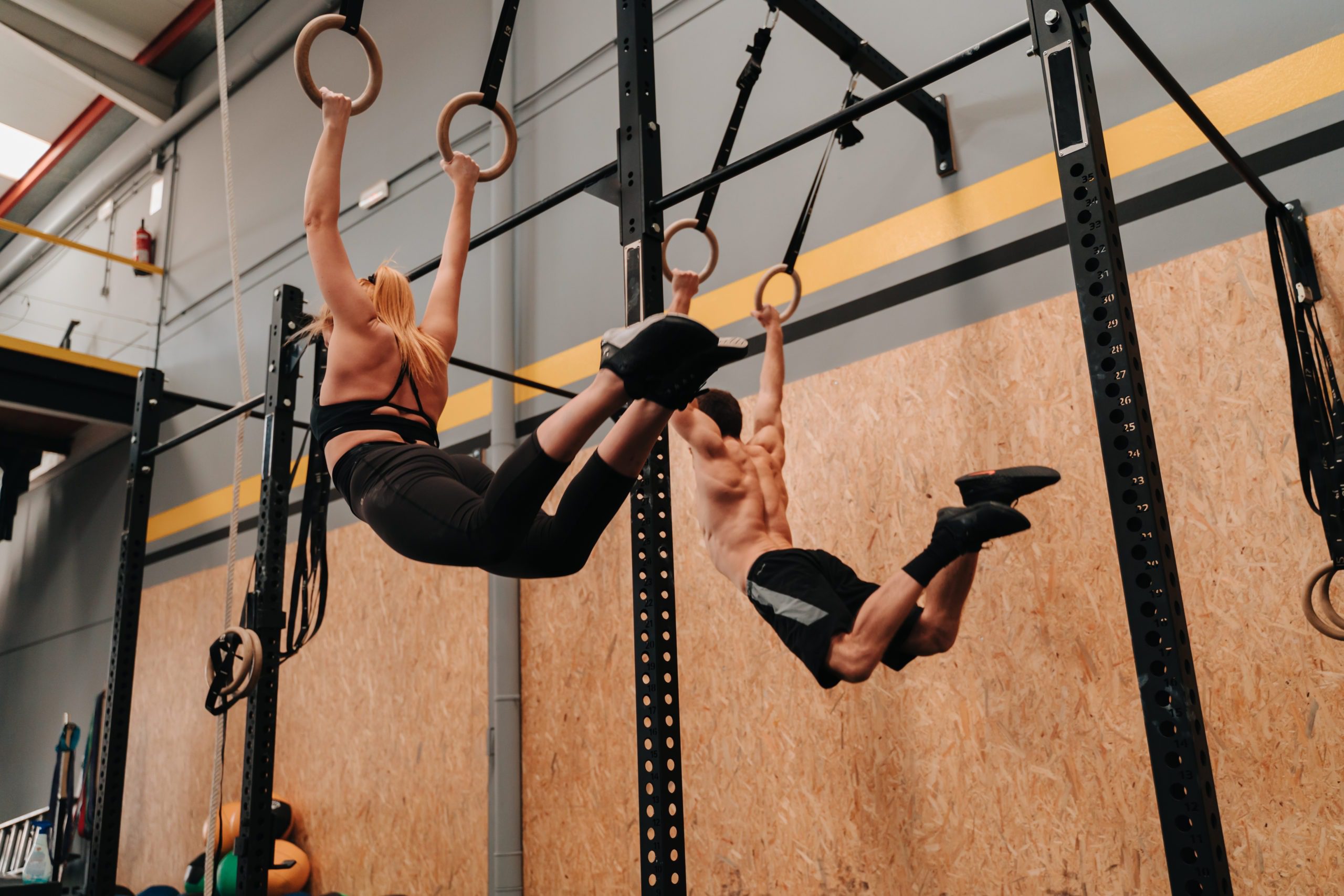Deficit Deadlift Benefits & Points of Performance

From a mechanical standpoint, how can you make picking something up off the floor more challenging? An obvious answer is to increase the load—a less obvious answer is to make the floor farther away. Enter: the deficit deadlift.
Deficit deadlifts are often programmed as assistance work for the setup and first part of the conventional deadlift. Use deficit deadlifts to make your standard deadlift stronger and get through those high-gravity stick points.

Try This Unique DL Variation to Get Stronger Pulls
In a conventional deadlift, the lifter’s feet and the plates of the loaded barbell are resting on the same plane. Deficit deadlifts or deficit pulls are pulling movements from the floor in which the lifter is standing on an elevated platform. This effectively increases the distance between where the lifter is standing and where the weight is resting.
It’s worth pointing out that the diameter of a weight plate is standardized, but totally arbitrary. Taking into account that the height of the bar off the floor is always the same and everyone’s morphology is different, it doesn’t really matter where you pull from. What matters is your form when you pull.
Deficit deadlifts put a slightly different demand on an athlete’s muscle systems than conventional deadlifts (ie. when the thing you’re picking up is level with your feet). Conventional deadlifts target your hamstrings, glutes, and back, but the increase in range of motion needed at the deficit starting point recruits more of the quads and posterior chain.
Coach’s Note: Having long arms relative to the rest of your body will be the biggest advantage for this deadlift variation. If you look like an orangutan, maintaining your form through this lift will be way easier than if you have mini kangaroo arms.
Deficit deadlifts come with some caveats—your deadlift form should be on point before fighting gravity from a hole. Pulling from a deficit will ruthlessly expose any weaknesses in your execution and you can’t just muscle your way to the top like with a standard sumo deadlift.
(Speaking of sumo stance, you can do sumo style deficit deadlifts with a slightly lower elevation. For our purposes, we’ll focus on the conventional deadlift stance.)
Check out our guide to this fun deadlift variation and smash some monster pulls.


DOWNLOAD
trainheroic’s
free APP
How to do Deficit Deadlifts
Points of performance
Setup
The most important part of the deficit deadlift is the setup. For this movement, you’ll need a loaded barbell and a narrow 2-4 inch high platform. If the platform is tricky to find, try stacking a couple of rubber mats, using a 25lb or 45lb rubber weight plate, or two plates side-by-side.
Stand on your platform and find your feet in a hip-width stance for your setup. When you look down, the bar should be over the middle of both feet. Crouch down to grip the bar right around the edge of the inside knurling. If your bar doesn’t have knurling (first of all, it belongs in a museum), your grip should be about shoulder-width.
From here, you want to be able to create tension against the bar with a neutral spine before you initiate the pull. For many athletes, this is the most challenging part of the deficit. The changes in setup are subtle, but enough to throw you off your game if you’re not careful.
Your setup should be close to a regular deadlift with your hips a little lower than where they’d normally be. Look slightly down and forward at the floor in front of you to keep your neck neutral. Squeeze your glutes a little to tuck your pelvis so you don’t arch into your lower back.
Brace & Pull
Take a breath to brace your core and tighten your lats so the bar stays close to your body. Push the floor away with your legs to activate your quads as you pull the bar up your shins. Don’t let your hips shoot back first, but aim to have your chest and hips rise at the same time.
You should feel maximum tension in your hamstrings and posterior chain. Make sure to keep your back flat throughout the lift, no excessive rounding. If your spine looks like a question mark, you’re doing it wrong.
Lockout
Once the bar is past your knees and reaches your thighs, squeeze your glutes to drive your hips forward and reach full extension. Lock your hips and knees at the same time as you stand up to complete the lift. From lockout you can either drop the bar if you have the right plates for that or reverse the movement to set it down.
The Marketplace: Shop Expert Programming from Real Coaches
Sometimes all you need to reach your destination on your fitness journey is an expert guide. We’ve got you covered.
The TrainHeroic marketplace is the only place to purchase programming from the World’s best coaches, delivered through the immersive training experience of the TrainHeroic app.
Browse from thousands of programs for any goal and every type of athlete.
Or, join a monthly programming membership to connect with a real coach and community of athletes training just like you. Try any programming subscription free for 7 days.

Loading & what to work on
The weight you can pull for deficit deadlifts will likely be about 10-25% lighter than your conventional deadlifts. The lighter load gives you a chance to work on everything deficit pulling is good for:
- Improving your starting position
- Generating more speed & force off the floor
- Moving the needle on your posterior chain strength
- Growing thick wheels
The greater range of motion at the start of the deficit deadlift forces you to start pulling from a deeper position. As long as you can keep your back flat, you’ll be able to work this movement safely. If you feel your back rounding or your mobility limitations getting in the way, lower your platform to one inch and work from there.

Lily frei
Lily is TrainHeroic’s Marketing Content Creator and a CF-L1 with an English background. She was a successful freelance marketer for the functional fitness industry until being scooped up by TrainHeroic. An uncommon combo of bookish, artsy word-nerd and lifelong athlete, Lily is passionately devoted to weightlifting, CrossFit, yoga, dance, and aerial acrobatics. Find her showcasing her artist-athlete hobbies on IG @lilylectric.

Join the community
Sign up for the latest training news and updates from TrainHeroic

About TrainHeroic
Support
Made with love, sweat, protein isolate and hard work in Denver, CO
© 2021 TrainHeroic, Inc. All rights reserved.


